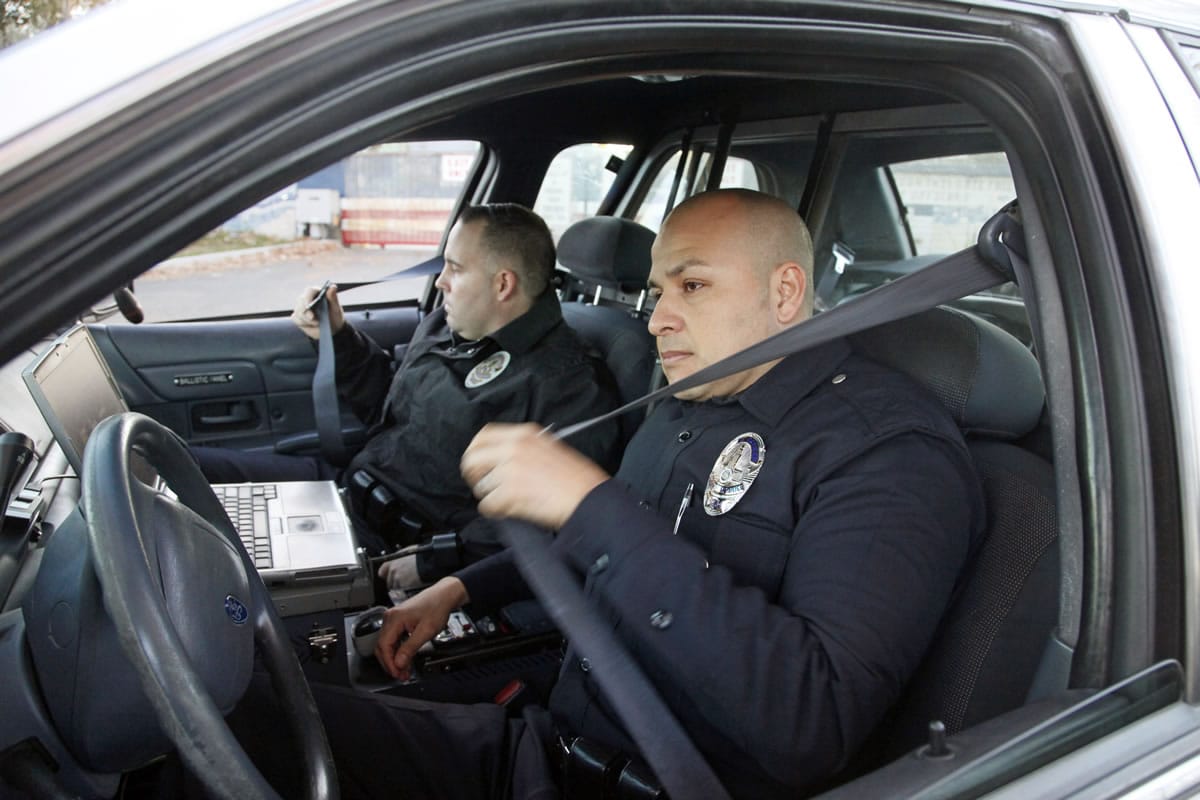Local police know firsthand the benefits of wearing a seat belt while they're on patrol.
Clark County sheriff's Sgt. Fred Neiman was driving near China Ditch in 1990 when a driver ran a stop sign and T-boned his patrol car. Although his car rolled, landing on its top, Neiman walked away unscathed. Just days before, he had visited the same site after a fatal crash. For this, he got a "saved by the belt" license plate bracket.
After seeing so many crashes, Neiman said, "It becomes evident to you that they do work."
Neiman said those on patrol are supposed to wear seat belts while they're driving. The official policy states that this helps to reduce the severity of injuries if deputies are involved in a collision and it helps them maintain control of their car during pursuits or emergency high-speed driving.
"It's not so restrictive, that you can't use some good officer safety tactics," Neiman said.
In volatile situations, deputies want to arrive safely and get out quickly, so they will take off their seat belt as they roll up on a scene before parking the car. It's common practice, Neiman said. He does the same thing when he gets out of his personal vehicle -- it's habit.
The Vancouver Police Department has similar policies and practices regarding seat belt usage, according to spokeswoman Kim Kapp. The agency's policy says officers don't have to wear seat belts when it's so impractical or unsafe that it outweighs the safety benefits.
"We're not exempt from the seat belt law because we're police officers," said Trooper Will Finn, spokesman for the Washington State Patrol. He acknowledged that troopers can get caught up with responding to traffic violators -- including those caught not wearing a seat belt -- and forget to put the belt on if they don't make a conscious effort. (Patrol cars ding if the driver isn't belted in.) Finn said that because he wears a protective vest under his uniform, he can't feel the seat belt.
Troopers are also required to restrain people riding in the back and to instruct anyone in the passenger seat to put on their seat belt.
-- Patty Hastings



